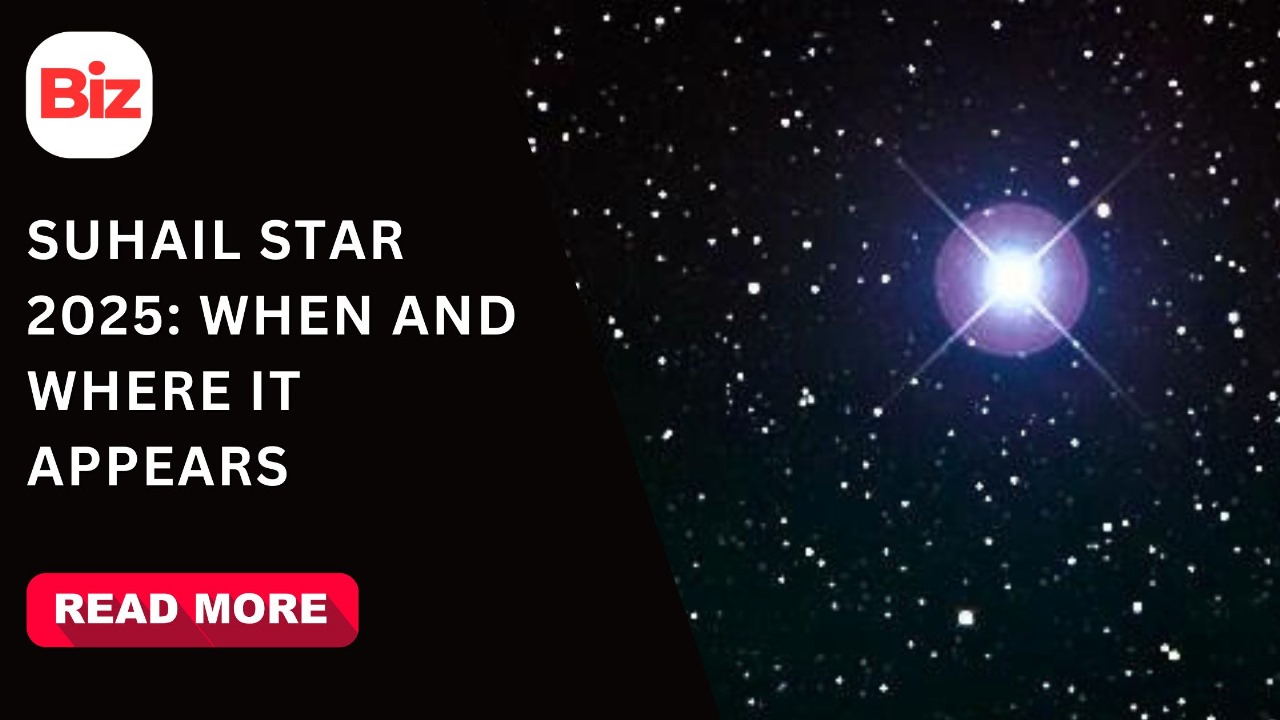The Suhail Star has finally risen over the Arabian Peninsula. This event occurred on Sunday, August 24, and now people have high hopes for the weather. Since ancient times, it has been believed that once the Suhail Star appears in the Southern sky, it marks the end of the summer season. Here’s all you need to know about development!
Suhail Star Rises in Southern Sky
By the Gulf News, Canopus or Suhail, the second brightest star, has finally risen in the Southern sky. With the advent of this much-awaited star in Arabia, for centuries, it has marked that the end of the summer season. In reality, as stated by the Jeddah Astronomical Society, they had already announced that the star would ascend on August 24th. So, by the ascension of this star, it becomes the beginning of cool nights and shorter days.
What Is the Suhail Star?
The Suhail Star, or Canopus, is the second brightest star in the evening sky after Sirius. Its sighting in the Arab world is much more than a purely astronomical phenomenon. Traditionally, Bedouins, mariners, and tillers of the land employed Suhail as a seasonal marker to guide them through the desert and ocean, and schedule their agricultural seasons.
How Is the Suhail Star Recognised?
For those curious, Canopus is known as a yellow white giant star. It is in the Carina constellation and approximately 313 light-years away from Earth. Actually, this is seen in the South of latitude 33° North. It’s observable over Central and Southern Arabia, and even some parts of North Africa. But the star never rises above the horizon and remains hidden all year round in Northern Arabia and the Levant.
When Will Summer End in UAE?
One of the questions asked most often during these months is: “When does summer end in UAE?”
Historically, the appearance of Suhail has indicated that the scorching summer heat has reached its highest point, and from this point, temperatures will start to descend gradually. Although the cooling is not immediate, residents look forward to feeling a welcome relief from the extreme heat some weeks after the star appears.
In 2025, the Suhail Star was seen on August 24, which means citizens of the UAE, Saudi Arabia, and other Gulf nations can now expect more agreeable evenings and the arrival of autumn.
Arab Cultural Significance of Suhail
For the Arabs, Suhail is not merely a star—it is deeply embedded in culture:
- Weather Indicator: It signifies the end of summer and arrival of cooler days.
- Agricultural Guide: Farmers have been using its rise for decades to guide the planting season.
- Navigation Tool: Suhail has also been used by ancient Arab sailors as a navigational aid at sea.
- Poetic Symbol: The star has been famously eulogized in Arabic poetry as a symbol of hope, transformation, and revival.
Suhail 2025: What to Expect
Residents can expect a smooth transition as Suhail becomes visible.
- Decrease in Daytime Heat – The sweltering afternoon heat of July and early August will become more bearable.
- Cooler Nights – Evening strolls and trips to the desert will be more pleasant.
- Seasonal Preparations – Farmers, fishermen, and Bedouins still respect this time as a natural seasonal indicator.
Final Thoughts
The appearance of the Suhail Star every year is a reminder of how much Arab culture is tied to nature. For others, it’s not only about astronomy but also about tradition, survival, and community.
As Suhail 2025 lights up the southern sky, it carries the same message it has for centuries: summer is finally on its way out. So, if you’ve been wondering “when will summer end in the UAE?”, the answer is here—thanks to Suhail.
FAQs
Q1: When will the Suhail Star be visible in 2025?
It will be visible on August 24, 2025, across the Arabian Peninsula.
Q2: Why is Suhail significant in the UAE?
Because it marks the end of intense summer weather and has been a cultural signpost for centuries.
Q3: Does Suhail actually mark the end of summer?
Yes, traditionally, its rise marks the end of intense summer and the onset of more temperate weather.
Q4: Where is the best location to view Suhail?
Any location with an open southern horizon—mountains, deserts, and sea coasts are best.
Q5: Why is Suhail unique among other stars?
Its timing, luminosity, and cultural significance make it stand out from other prominent stars.








